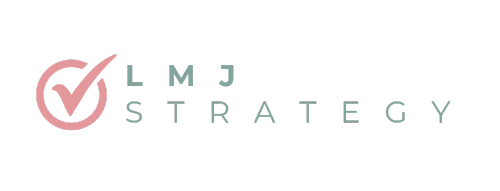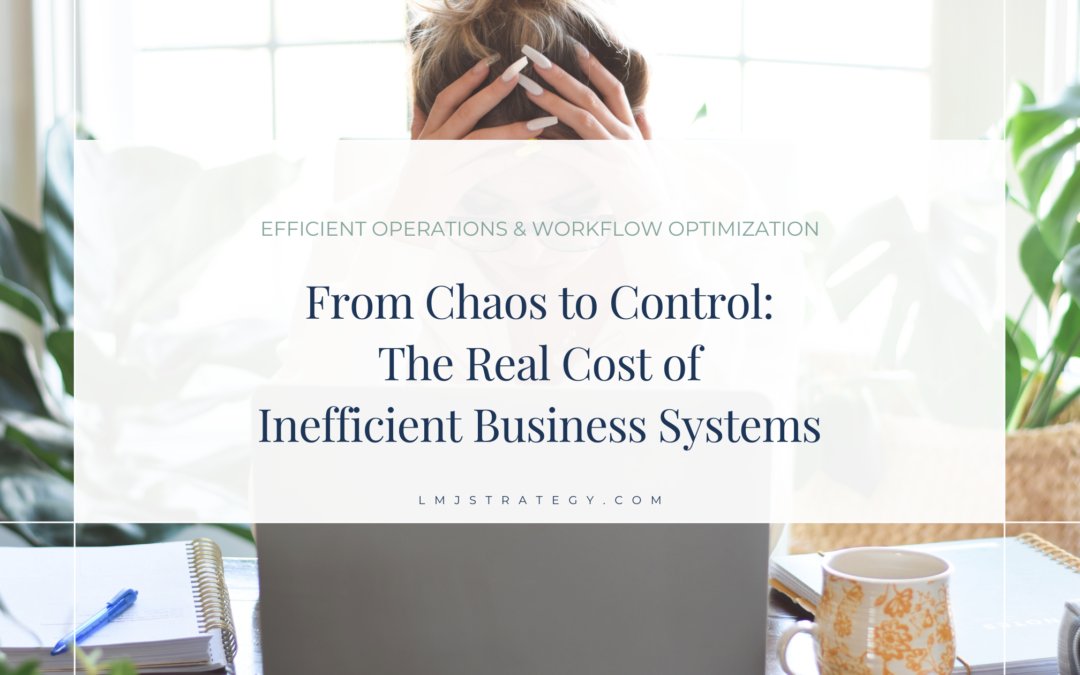When was the last time you stopped to really look at your business systems? Not just the day-to-day band-aid fixes, but the entire framework that keeps your operation running? For most small business owners, the answer is ‘not since we started’ – and it’s costing them more than they realize.
As a workflow strategist working with small businesses and solopreneurs, I’ve seen firsthand how outdated or insufficient systems can quietly drain resources, time, and energy from otherwise thriving businesses. The most surprising part? Many owners don’t realize it’s happening until they’re already feeling the effects.
Understanding the True Cost of System Inefficiency
Most business systems start as personal solutions. When you’re a solopreneur, that works fine. You create processes that fit your style, use tools that make sense to you, and keep moving forward. But as your business grows, these personal solutions rarely scale smoothly for a team.
Recently, I worked with a client who was using three different platforms with CRM capabilities while also paying $600 annually for a standalone CRM. That’s not just redundant spending – it’s a recipe for scattered data and confused team members.
What could your business do with an extra $600 in your annual budget?
5 Warning Signs Your Business Systems Aren’t Scaling
- Information Scavenger Hunts: Your team regularly loses productive time searching through multiple platforms for information that should be readily available
- Redundant Tools: You’re paying for multiple subscriptions without realizing their full functionality, leading to expensive overlaps in capabilities
- Training Troubles: New team members struggle to understand your processes because everything’s pieced together without a cohesive structure or clear documentation
- Communication Gaps: Critical updates get buried in email threads or missed entirely because there’s no standardized way to share important information
- Constant Band-Aid Fixes: You’re caught in a cycle of quick fixes and putting out fires rather than building sustainable solutions
The most telling sign? When you find yourself thinking, “Well, I can use it just fine – why can’t everyone else?”
How Poor Business Systems Impact Your Bottom Line
Let’s talk real numbers. One of my clients was using a Twitter-focused scheduling tool for LinkedIn posts simply because it was familiar. While the tool technically “worked,” it wasn’t optimal. After a comprehensive analysis, we found a LinkedIn-specific solution that:
- Saved $8 monthly on subscription costs
- Required zero training time for new marketing interns (they already knew the platform)
- Included better team collaboration features
- Offered scalability for future growth
The initial time investment? About 3 hours for setup and training. The return? 30-40 minutes saved per week in workflow efficiency. That’s your investment paid back in less than a month.
What could you do with an extra 30 minutes each week?
Evaluating Your Current Business Processes
Before you can fix what’s broken, you need to understand what you have.
Start by asking:
- What solutions have you tried so far?
- Are you paying for features you never use?
- Do your team members have the tools they need?
- Are your current systems built for your business, or just for you?
The answers to these questions often reveal patterns that might surprise you. When clients tell me they’ve tried numerous solutions, it usually signals they’re treating symptoms rather than addressing root causes. When I hear “it worked fine when I was handling everything myself,” it’s often a sign that personal workflows haven’t evolved to support a growing team.
Getting feedback from your team is crucial, but it needs to be the right kind of feedback. Instead of asking “Is this working for you?” (which often gets a noncommittal “it’s fine”), ask specific questions like:
- How much time do you spend looking for information you need?
- What tasks take longer than you think they should?
- Where do you see the same problems happening repeatedly?
Remember: your team members are the ones using these systems daily. Their insights aren’t just valuable. They’re essential for identifying real pain points and opportunities for improvement.

From Chaos to Control: Building Better Systems
Understanding where your systems fall short is only half the battle. The real challenge lies in taking that knowledge and transforming it into actionable improvements without disrupting your daily operations. Many business owners get stuck here. They know what’s wrong but aren’t sure how to fix it without creating more chaos in the process.
Here’s how to start:
- Audit Your Current Tools: List everything you’re using and why
- Calculate True Costs: Include subscription fees, training time, and lost productivity
- Gather Team Feedback: What’s working? What isn’t?
- Research Right-Sized Solutions: Focus on tools that can grow with you
- Document Everything: Create clear SOPs for new processes
The key is to approach these steps as an investment in your business’s future, not just another task on your to-do list. Each improvement builds on the last, creating a foundation that supports your business as it grows. Whether you tackle this transformation on your own or with expert guidance, the goal isn’t perfection. It’s progress toward systems that work for everyone, not just the person who created them.
Taking the First Step
The journey from chaos to control doesn’t happen overnight, but it doesn’t have to be overwhelming either. Every business owner who’s successfully transformed their systems started in the same place: recognizing that something needs to change and taking that first step toward improvement.
Once you understand how you’re really spending your time, patterns will emerge. You’ll see where inefficient systems are costing you precious hours, where communication breaks down, and where simple changes could make significant impacts. These insights are invaluable for making informed decisions about your next steps.
Need help making sense of what you discover? Book a discovery call, and let’s explore how the right systems can transform your daily operations from chaos to control.
The time you spend optimizing your systems today is an investment in your business’s future efficiency, scalability, and success

